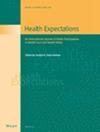Determinants and Experiences of Care-Seeking for Childhood Pneumonia in a Rural Indian Setting: A Mixed-Methods Study
Abstract
Introduction
Pneumonia is a leading cause of under-five mortality, with 30 million annual cases in India. Despite national guidelines, significant barriers to timely and appropriate care-seeking persist. Caregivers often face financial constraints, lack of awareness, mistrust in government facilities and a preference for non-registered medical practitioners (non-RMPs), delaying effective treatment. This study explores care-seeking behaviours, associated socio-demographic factors and barriers to access to appropriate healthcare for childhood pneumonia in rural India.
Methods
This study is part of a broader implementation research (IR) initiative and represents its formative phase. This mixed-methods study was conducted in Palwal district, Haryana, covering 42 villages (population: 107,440). A cross-sectional survey identified suspected pneumonia cases among 9593 under-five children through house-to-house visits using a structured checklist. Data on socio-demographic characteristics, health insurance, care-seeking patterns and provider preferences were collected. Directed acyclic graphs (DAGs) identified potential confounders in the association between care-seeking behaviour and key exposure variables. Additionally, qualitative in-depth interviews explored caregivers' perceptions, decision-making and healthcare barriers to pneumonia management. Quantitative data were analysed using logistic regression, while qualitative data were thematically analysed using the Three Delays Model. Suspected under-five pneumonia cases' caregivers and families were actively engaged in this formative phase to inform Phase II implementation strategies of broader IR, ensuring community-driven and contextually relevant strategies.
Results
Among 231 suspected pneumonia cases, 97% of caregivers sought medical care, but 71% consulted non-RMPs, and only 3.6% visited government facilities. Seeking appropriate care was associated with higher maternal education (AOR 6.5, 95% CI: 2.7–9.7) and higher wealth index (AOR 1.7, 95% CI: 1.0–2.6). Thematic analysis revealed delays due to symptom misinterpretation, reliance on home remedies, financial constraints, gender biases, mistrust in public healthcare services and logistical barriers.
Conclusion
Despite high care-seeking rates, provider preferences, socio-cultural factors and systemic barriers delay appropriate pneumonia treatment. Addressing these challenges requires improving awareness, enhancing public healthcare trust and strengthening frontline healthworker engagement. This study underscores the role of structured beneficiary involvement in refining pneumonia management strategies to ensure sustainable, community-driven interventions.
Patient or Public Contribution
This study is part of an ongoing implementation research (IR) aimed at improving the effective coverage of childhood pneumonia management in a low-resource setting. A structured engagement with primary caregivers of under-five children, mothers, fathers, family members, community members and local community stakeholders/representatives, for example, local leaders, village heads and so forth, has been integrated at multiple stages to ensure the relevance and applicability of its findings. The current study is part of Phase I (formative research) of the IR, where primary caregivers and family members participated in a needs assessment, providing critical insights into the barriers and facilitators influencing care-seeking for childhood pneumonia in a rural low-to-middle socio-economic setting. Their inputs have informed the refinement of study tools and the development of mitigation strategies for the logic and implementation model. As the research progresses into Phase II (model development and implementation), the community continues to play an integral role in providing feedback on the feasibility and appropriateness of proposed strategies. This ongoing feedback loop assesses how effectively these strategies strengthen linkages between the healthcare system and the community, foster an active local needs assessment mechanism among healthcare providers and enhance demand generation for appropriate pneumonia care-seeking. These iterative refinements ensure that the implementation strategies remain responsive to the evolving needs of the community. In the forthcoming Phase III, which will focus on scaling up the finalised implementation model, strategies will be adapted to further improve care-seeking for under-five children. Continuous engagement with caregivers and local community representatives, including Panchayati Raj Institution (PRI) members, will be central to refining these strategies. Additionally, during the dissemination phase, key findings will be shared with caregivers, community members and PRI representatives, facilitating discussions on study implications and informing future policy and programmatic decisions. Their ongoing involvement will help contextualise findings and enhance the long-term sustainability of strategies aimed at improving pneumonia care-seeking behaviours and effective management in rural India.

 求助内容:
求助内容: 应助结果提醒方式:
应助结果提醒方式:


